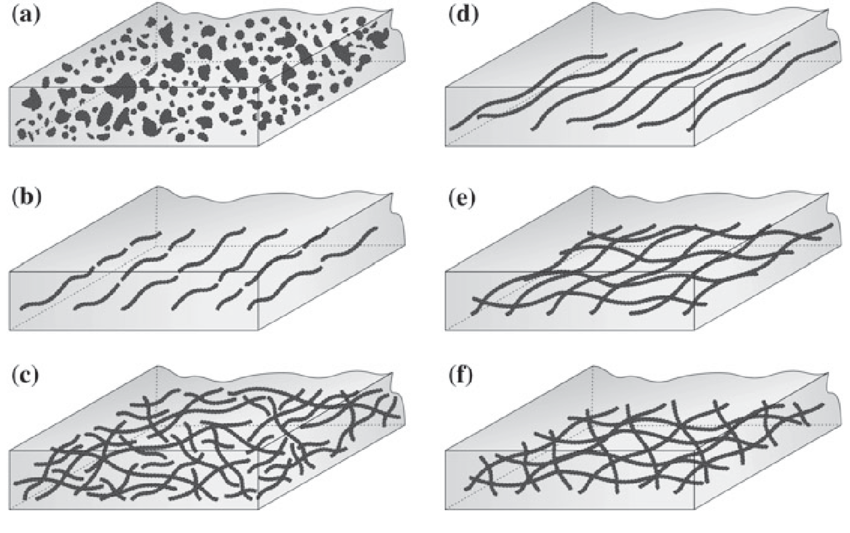Low expansion composites are a special class of materials designed to minimize expansion and contraction due to temperature changes. These materials are crucial in industries where stability and precision are key.
What Are Low Expansion Composites?
Low expansion composites are materials that have been engineered to have a very low coefficient of thermal expansion (CTE). The coefficient of thermal expansion measures how much a material expands or contracts when its temperature changes.
For example, when a material with a high CTE is heated, it will expand significantly. Conversely, a material with a low CTE will expand or contract very little with temperature changes.
These composites are made from a combination of different materials to achieve the desired properties. They are often used in applications where dimensional stability is critical, such as in aerospace, electronics, and precision instruments.
How Do Low Expansion Composites Work?
Low expansion composites work by combining materials with different thermal expansion properties. The goal is to create a composite that has minimal overall expansion or contraction. Here’s how they achieve this:
1. Material Selection
The first step in creating low expansion is selecting the right materials. Commonly used materials include ceramics, metals, and special polymers. Each material has its own thermal expansion characteristics, which can be combined to produce a composite with a low CTE.
2. Matrix and Reinforcement
Low expansion composite typically consist of a matrix material and reinforcement fibers. The matrix is the base material that holds everything together, while the reinforcement fibers provide additional strength and stiffness. By carefully choosing these materials and their proportions, manufacturers can create composites with minimal expansion.
3. Manufacturing Process
The manufacturing process is crucial in achieving the desired properties of the composite. Techniques such as curing, molding, and bonding are used to ensure that the materials are combined effectively and that the final product exhibits low expansion properties.
4. Testing and Quality Control
Once the composite is manufactured, it undergoes rigorous testing to ensure it meets the required specifications. This includes testing its thermal expansion properties and checking for any defects. Quality control is essential to ensure that the composite performs reliably in its intended application.
Applications
Low expansion composites are used in various industries where dimensional stability is critical. Some common applications include:
1. Aerospace Industry
In aerospace, low expansion composite are used in aircraft and spacecraft components. These materials help maintain the precise dimensions of critical parts, such as wings and satellite structures, even when exposed to extreme temperatures during flight or space missions.
2. Electronics
In the electronics industry, low expansion are used in circuit boards and other electronic components. These materials help prevent warping and distortion of electronic components, ensuring reliable performance and longevity.
3. Precision Instruments
For precision instruments like telescopes and measuring devices, dimensional stability is crucial. Low expansion help maintain the accuracy of these instruments by minimizing any changes in size due to temperature fluctuations.
4. Optics
In optical applications, expansion low composites are used in lens mounts and other optical components. They help keep optical systems aligned and focused, ensuring high-quality imaging.
Benefits
1. Dimensional Stability
The primary benefit of Low Expansion Composite is their ability to maintain stable dimensions despite temperature changes. This is critical for applications requiring high precision and accuracy.
2. Durability
These composites are often more durable than standard materials. They can withstand harsh environmental conditions and continue to perform reliably over time.
3. Enhanced Performance
In high-tech applications like aerospace and electronics, using expansion composites low can enhance overall performance. They help ensure that components operate correctly and efficiently, even in challenging conditions.
Challenges and Considerations
- Cost
Low expansion composite can be more expensive than standard materials. The cost of raw materials and the manufacturing process can contribute to higher prices.
- Complex Manufacturing
The process of creating low composites can be complex and requires precise control. This can increase the time and effort needed to produce high-quality composites.
- Material Compatibility
Not all materials are compatible with each other. Finding the right combination of materials to achieve low expansion properties while maintaining other desired characteristics can be challenging.
Conclusion
Low expansion composite are advanced materials designed to provide dimensional stability and durability in a variety of applications. By carefully selecting and combining materials, manufacturers create composites that expand and contract minimally with temperature changes. These composites are essential in industries like aerospace, electronics, and precision instruments, where stability and performance are critical. Thank visiting learningpave.in



